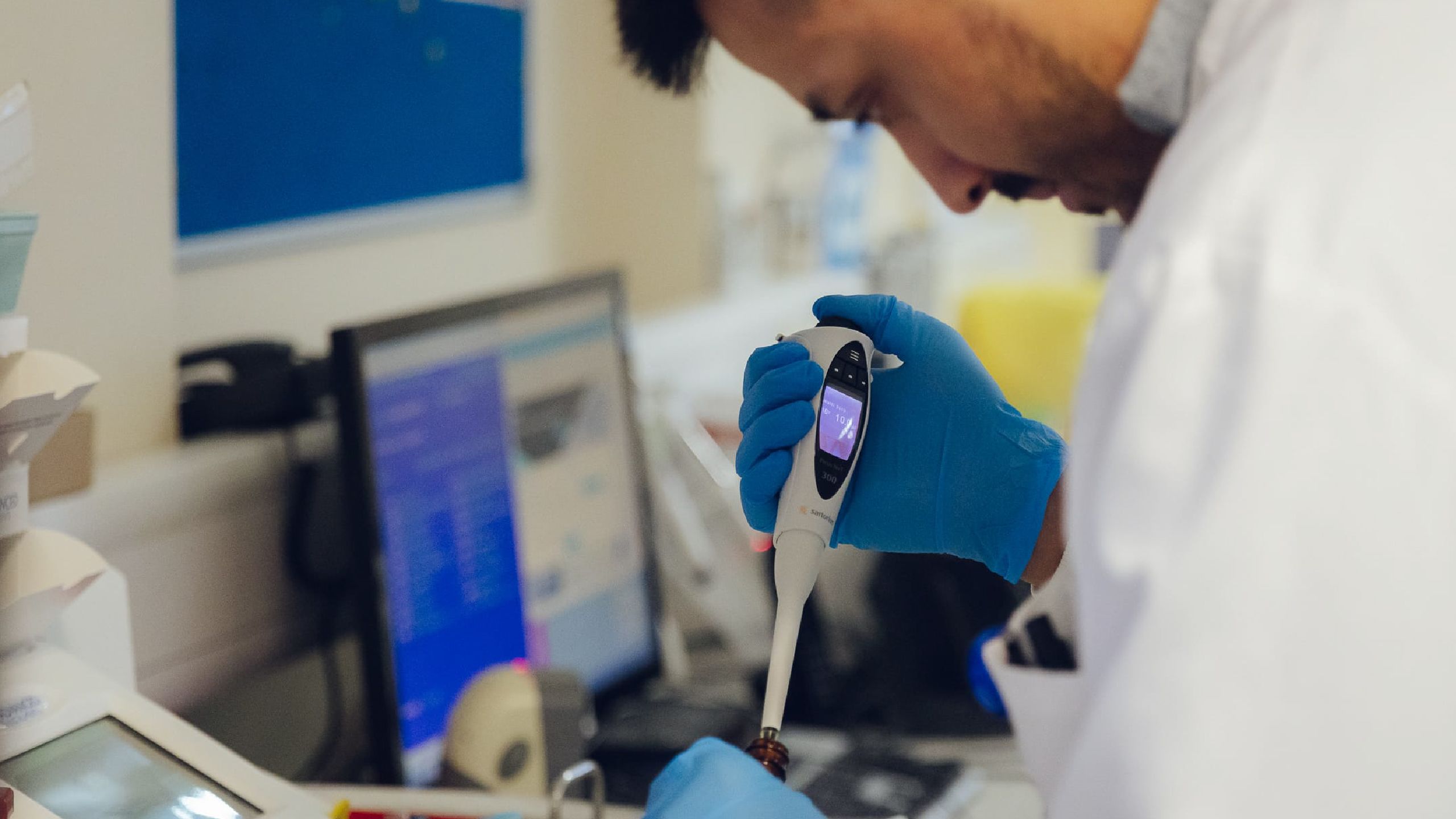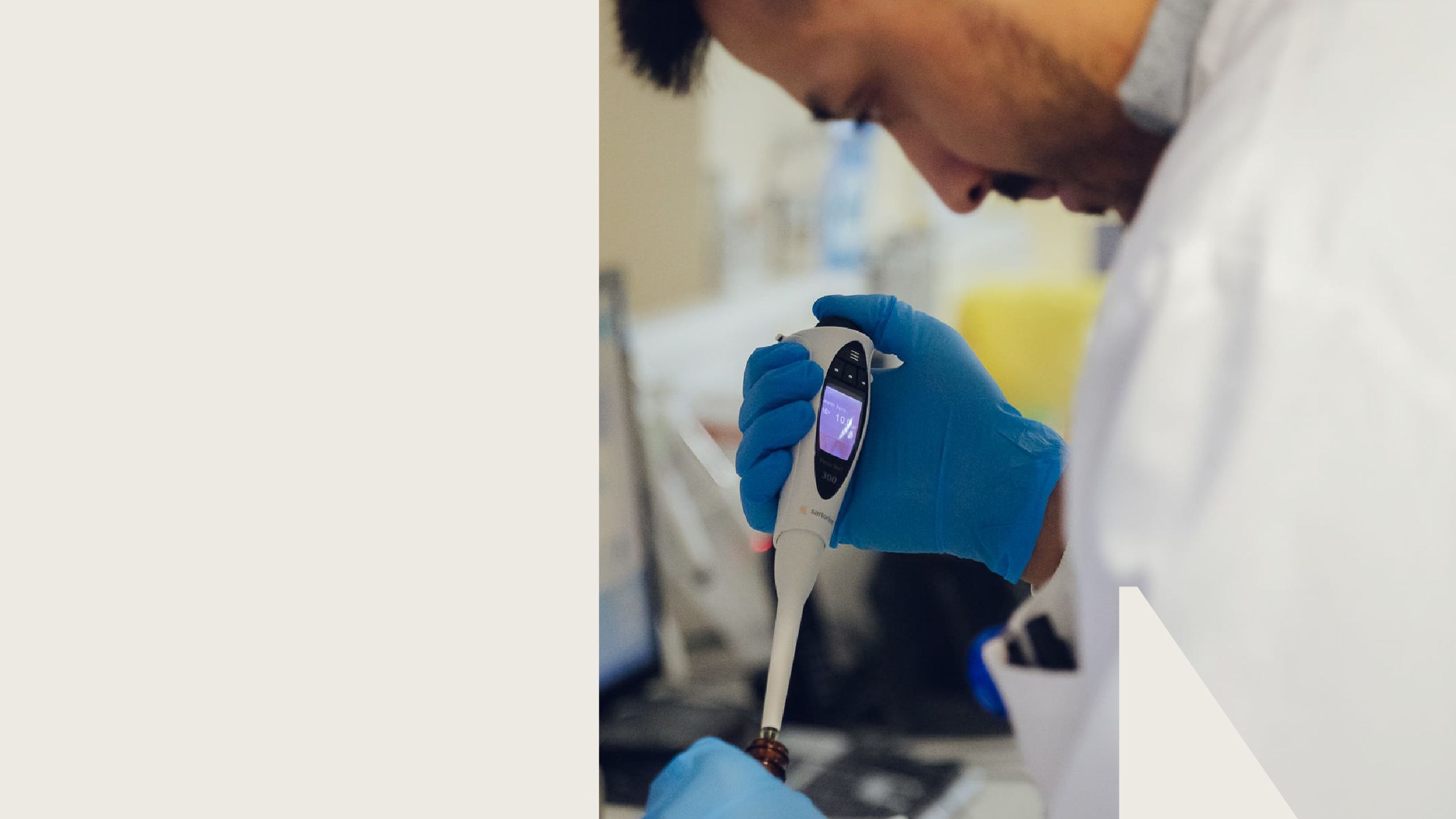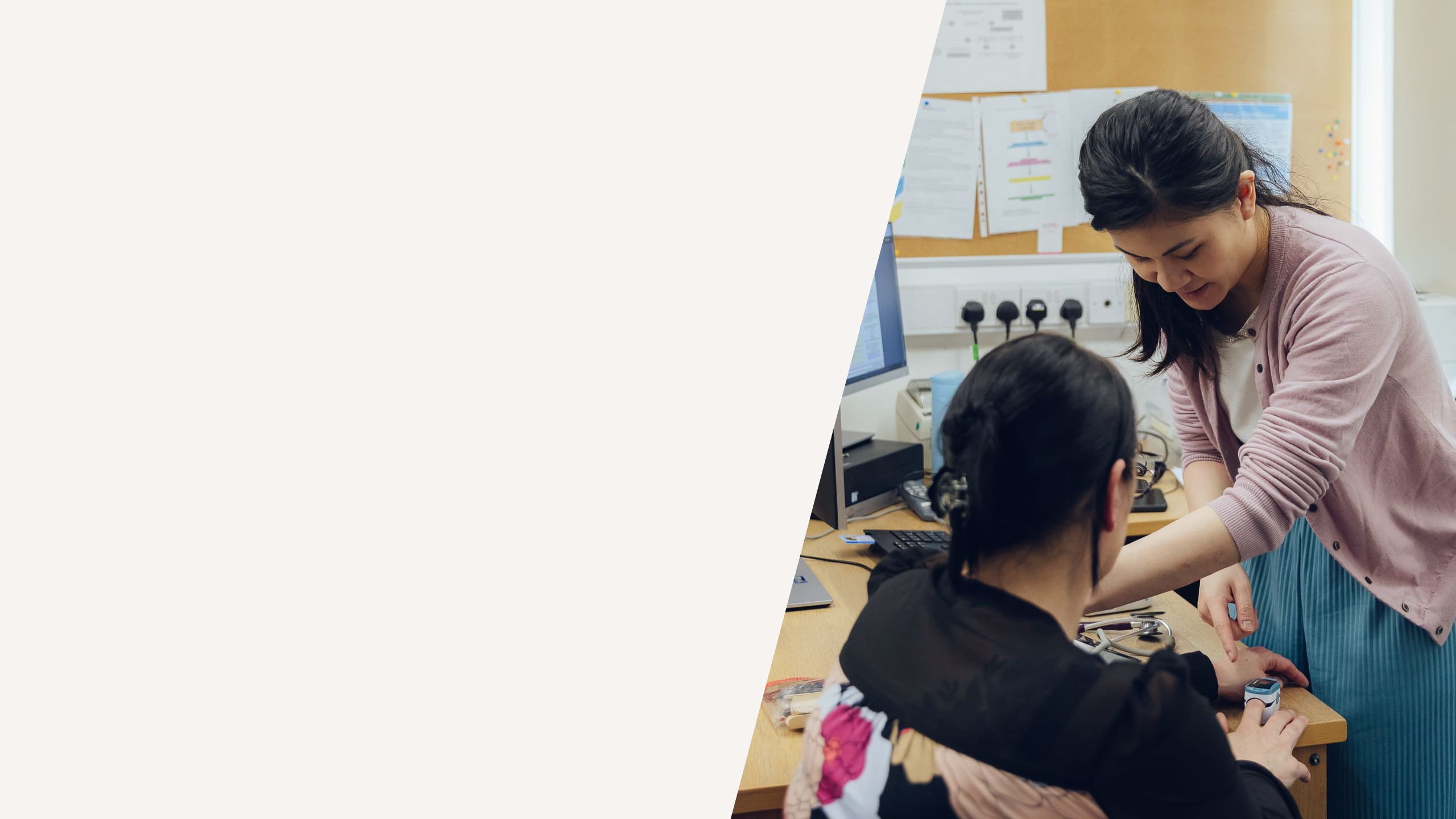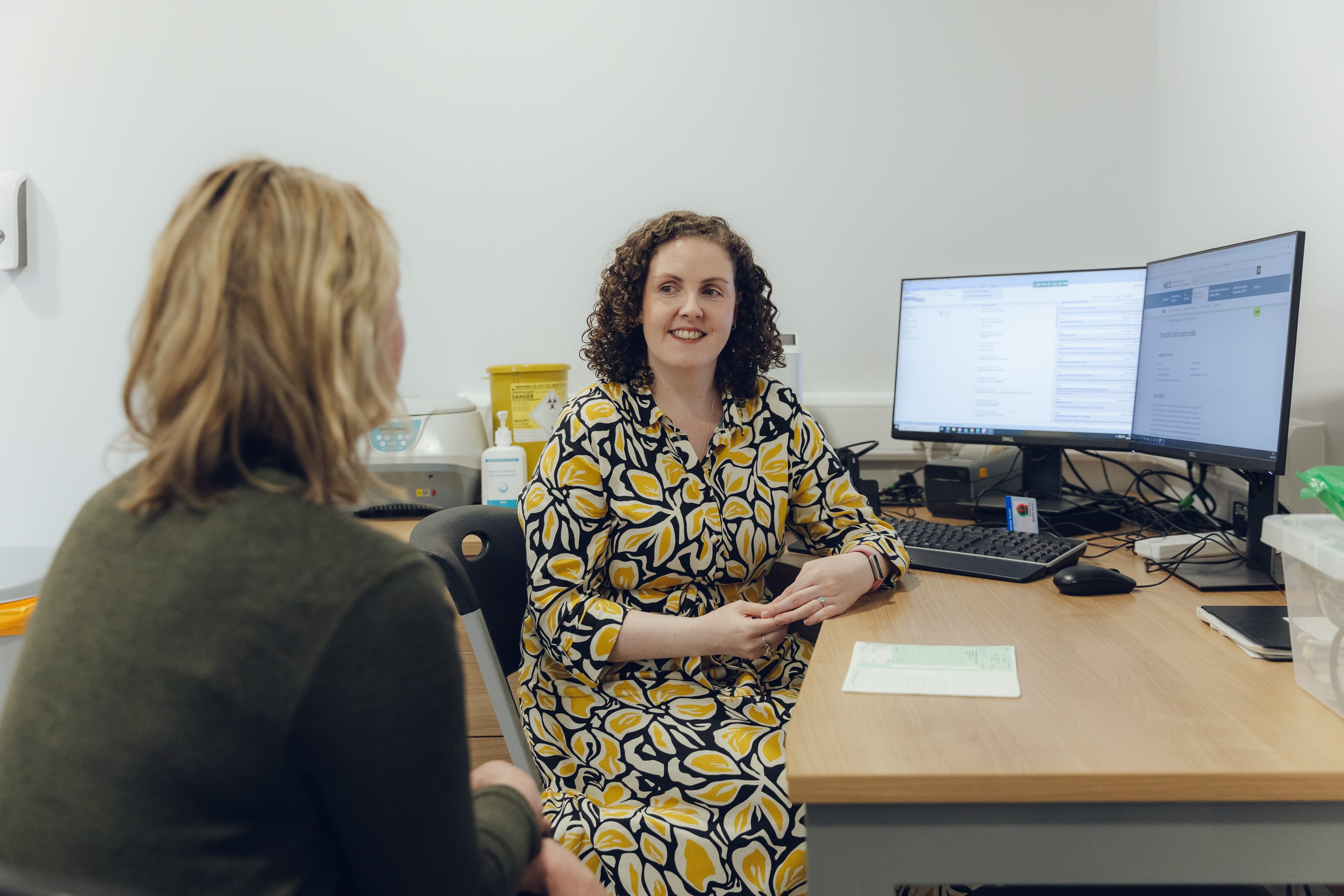National Institute for
Health and Care Excellence
Annual Report and Accounts
2024 to 2025


Chairman's foreword
Sharmila Nebhrajani OBE
NICE was 25 years old in 2024. So, in my foreword for this year’s report, I will look back a little further than usual in my reflections. The chief executive will consider organisational developments in the past year, but I will take the opportunity afforded by a significant anniversary to look at our work in that longer context.
NICE’s 25th anniversary marks a milestone. Such is the state of semi-permanent flux in the machinery of government that many organisations created do not survive for 25 years. Some disappear; some have their functions and responsibilities changed significantly; some merge or continue in some markedly different form. NICE has endured and - barring a change in its name to reflect its wider remit for social care - has done so as recognisably the same body that it was in 1999. It tackles problems around balancing the efficacy and value of health and care treatments – issues that would be familiar to its founders.
Our continuity testifies to an enduring mission. We provide guidance and direction to practitioners and commissioners throughout the health and care system, as they try to set and adjust priorities for care and treatment to patients in a way that remains affordable while maximising successful outcomes and benefits. We continue to bring intellectual and methodological rigour to our work. And we operate with considerable transparency so that the dialogue between all the many and various parties remains lively and well-informed.
Addressing new and existing challenges in the health and care system
The problems in the health and care system over this past year have hardly been new. Scarcity in resources is a constant theme of our work. We will never reach the point where all healthcare needs can be met – where recommending new treatments will not inevitably lead to some existing ones being displaced. Our contribution has been, and continues to be, the provision of a framework in which the decisions about allocating finite resources are made within a rational context based on sound information and analysis. The specifics change over time, with new treatments for existing conditions and new illnesses to provide new challenges. In this past year, much attention has been devoted to examining the potential value of emerging treatments for dementia and obesity. But our purpose has remained constant, and our methods continue to evolve to ensure that purpose is met.
A transformation delivering quality and timeliness
As an organisation we cannot remain static in how we operate. Our plan to improve our efficiency has continued through the past year, and we are now 3 years into a major transformation programme with demonstrable success in quality and timeliness. The transformation project is enabling the organisation to evolve to meet changing, and in some cases new, challenges. It also allows us to evaluate the opportunities that some of the finest minds on the planet can offer as possible healthcare solutions; solutions which might ameliorate patients’ symptoms, transform their experiences, or radically improve their lives. In my fifth year as chairman, following my reappointment for a second term in May 2024, the chance to see the pace and scale of therapeutic innovation, and contribute to evaluating it at first hand, remains a stimulating and fascinating privilege.
Thank you
That privilege is enhanced by the exceptional quality of the board that has come together to lead and direct our work. The respect and admiration our board commands was demonstrated when all members who had completed their terms were reappointed - notably by ministers of the new government, showing strong cross-party recognition of their value. That indicates how we have adapted to a new government with relative ease. To all board colleagues, I would like to reiterate my gratitude for their invariably thoughtful contributions and their collegiate spirit.
We are also fortunate to be served by a dedicated and capable team of executives and staff and to enjoy the support of the many committee members who assess specific applications across such a wide range of their professional specialisms. Without both sources of support our work would be impossible and on behalf of all my board colleagues, I wish to reiterate our genuine thanks and appreciation to them.
Chief executive's foreword

Dr Sam Roberts
I am delighted to present NICE’s annual report and accounts for the 2024 to 2025 financial year. As I look back on our achievements, I am proud of the progress we have made in what is my third year as chief executive.
Since 1999, we have helped get the best care to people, fast, while ensuring value for the taxpayer. Through delivering this mission, we’ve earned a global reputation based on our founding principles of independence, transparency, and rigour.
However, the world we operate in has changed considerably since our inception. Countries across the globe face the same challenge: how can we embrace innovative health technologies that are rapidly emerging, while ensuring the health and care system remains sustainable and accessible for all?
As I write this foreword, work is well underway to finalise the NHS’ 10-year plan, which aims to address these systemic issues. NICE has fed into this important work alongside patients, communities, practitioners. Together, we are shaping a shared vision of the NHS that emphasises prevention, is community-orientated, and digitally enabled.
To help deliver this vision, NICE as an organisation must change. We will not compromise the founding principles through which we have earned our reputation. But we will adapt to focus on our:
- relevance
- timeliness
- impact
- usability.
We’re in the third year of delivering these priorities as part of our ambitious transformation plan, through which we will support the NHS as it embarks on its new vision for health and care.
Relevance
As NICE has grown as an organisation, so has the number and range of topics on which we produce guidance. However, we cannot cover everything that is of interest to the health and care system. So, we must ensure that we are focusing on the areas that matter most.
To facilitate this, in 2024, we established a new prioritisation board. The board reviews and decides which topics NICE should prioritise based on system demand. It has made more than 75 decisions so far, and published our first ever forward view, which highlights the areas we are prioritising over the coming year.
As the NHS moves from analogue to digital, we too have shifted our energies to expand our portfolio of guidance on digital health technologies. Our digital health programme is now more than 30 times bigger than it was in 2021 to 2022, with 100 digital technologies evaluated this year, including treatment for chronic tic disorders and Tourette syndrome, with which 1 school child in every 100 is affected.
We’re transforming how we evaluate health technologies that include diagnostics, devices and digital technologies, and AI. The plans will enable more products to be evaluated, and remove the requirement for medical devices to be cost saving for them to be recommended for use in the NHS. This will allow us to improve and accelerate the adoption of innovative health technologies into the NHS, to help transform patient lives.
We’re aware of the growth of AI across health and care and are taking active steps to facilitate its safe and efficient uptake in the NHS. This year, we became the first health technology assessment body in the world to produce a position on the synthesis and generation of evidence in AI and we published a statement of intent for our guidance on AI technologies. We also published guidance recommending 4 new technologies to help professionals detect fractures in urgent care settings, which has the potential to speed up diagnosis and reduce follow-up appointments.
The arrival of genomics medicine brings great promise and the potential to transform our understanding of health and care. We have more than 2 decades of experience in this area, most recently recommending a genetic test that can offer personal care to people who have had a stroke. We are now building on this by partnering with NHS England on a national genomics pathway.
Timeliness
NICE plays an essential role in getting promising innovative treatments to the people who need them, at speed. Indeed, England is now the 5th fastest country in Europe for making new health technologies available after regulatory approval.
Beyond our 25th anniversary, we celebrated another landmark – the publication of our 1,000th technology appraisal. While it took us 18 years to publish the first 500 appraisals, we’ve doubled the total in the last 6 years.
This year, the timeliness of our medicines guidance has improved by 26% year-on-year, and we have improved the timeliness of our health technology guidance by 11%.
Our NICE Advice service is helping improve the timeliness of our appraisals. We know that engaging with the service can reduce appraisal timelines by nearly 3 months.
Impact
Once our guidance is published, it is important that it is then implemented by our colleagues in the health and care system.
Our data show that the largest number of people on record (5.3 million) are now benefitting from NICE-recommended statins to reduce heart attacks and strokes following our updated guidance.
This is the biggest annual increase since 2016 to 2017. It coincides with the introduction of new cholesterol indicators in the GP Quality and Outcomes Framework and the release last year of updated NICE guidance on cardiovascular disease.
We have also identified that we have made 48 positive recommendations for lung cancer treatments in the last 10 years – 6 times more than in the previous decade.
To help health and care professionals put our guidance into practice, we’re developing implementation toolkits in high profile areas such as obesity. And this year, we have started tracking the uptake of our recommendations in 20 priority topics to increase the impact of our advice.
Usability
Our guidance has been downloaded more than 11.5 million times this year. But we know that more can be done to make sure it is up to date, practical and accessible.
We’re bringing together our guidance by topic so that it is all in one place and easy to find. This means we’re including our published technology appraisals in our guidelines – making it easier to view and decide on treatment options. By April 2025, we incorporated 183 of our technology appraisals into relevant guidelines, which is 35% of the catalogue.
In 2024, we worked with our users to streamline the way we word our medicines and healthtech recommendations from 33 different options into 4 structured types of recommendations. These shorter and less complex recommendations are designed to aid implementation across all our medicines and healthtech guidance products, and help our users understand them quickly.
Uniting to get the best care to people, fast, while ensuring value for the taxpayer
I’d like to finish by offering my sincerest thanks to all the practitioners, commissioners, patient and community representatives, industry partners and collaborators who have helped us achieve our strategic priorities this year. During a period of sustained pressure, growth and change, you have remained steadfast in your support for NICE and our shared goal; of getting the best care to people, fast, while ensuring value for the taxpayer.
Thank you to our chairman and our board for their insight and contributions in helping us deliver our transformation plan. I’d also like to offer my heartfelt thanks to NICE’s staff who display an unwavering commitment to our purpose. Through acting as one team, united behind this shared purpose, with a laser-like focus on the needs of our users, and open to different perspectives, we’ve continued to make a positive difference to the nation’s health and care.
NICE remains committed as ever to its founding mission while embracing innovation and transformation. Together with our partners across health and care, we will continue to ensure that the next 25 years of NICE deliver even greater benefits for patients, practitioners, and the public, fulfilling our promise of better care for all.
Key facts and figures




Relevant
We recommended the world’s first gene editing therapy for treating severe beta-thalassaemia – the first country in Europe to do so.
Our new severity modifier has been applied more widely than the end-of-life modifier and is resulting in a higher proportion of positive recommendations.
Timely
Since April 2024, we’ve improved the speed of our appraisals by:
26% for medicines
11% for healthtech
The average time to medicines access following regulatory approval is now 48 days in optimal appraisals.
Impactful
Up to 5.3 million people are now benefitting from NICE-recommended statins or ezetimibe to reduce heart attacks and strokes, following updated guidance.
We’ve made 6 times more lung cancer treatment recommendations over the past 10 years than in the previous decade.
Usable
We have incorporated around a third of our technology appraisals into our guidelines, making our guidance easier to use.
We’ve streamlined and simplified our recommendation types across healthtech and medicines guidance from 33 to 4, to help users of our guidance implement it and understand it more quickly.


Relevance
Focusing on what matters most
Prioritising our guidance topics
The number of new and innovative health technologies being developed continues to grow at an unprecedented rate. To ensure that the health and care system delivers the best outcomes, it is important that the NHS only adopts health technologies that are clinically and cost effective.
For NICE, this means that we must focus on what matters most. To help achieve this, we have developed a new, centralised approach to prioritising our guidance topics. Through this approach, we can make sure that we produce guidance that is relevant, timely, accessible, and on the areas that have the most impact.
This year, we launched our new prioritisation board. The board’s role is to:
- Review and discuss topics, which will enable effective decision-making for guidance prioritisation.
- Maintain a forward view of topics and a rolling plan in response to changes in system need and demand.
- Publish its decisions, ensuring visibility and transparency to enable effective sharing of information with our stakeholders.
We recently refreshed our forward view and will be publishing an updated version in autumn 2025, following the publication of the new 10-year plan for the NHS.


Reducing health inequalities
Health inequalities are differences in health across the population, and between different groups in society, that are systematic, unfair and avoidable.
At NICE, reducing health inequalities is one of our core principles, and a priority we’re committed to as part of our 5-year strategy.
This year, we took further steps to ensure that reducing health inequalities is firmly embedded within our processes.
In January 2025, we consulted on updates to our methods and processes that will provide coherent guidance to committees, technical teams and stakeholders on how health inequalities should be considered.
The update seeks to clarify what health inequalities evidence is relevant for technology evaluations and how committees will consider this evidence.
The proposals follow a similar update to our guidelines manual in 2024. The guidelines update ensures that health inequalities are taken into account systematically during the development process and via quantitative analysis when data allows. We are currently refining the planned update by addressing comments received as part of the consultation.

Case study
Collaborating with the NHS Race and Health Observatory
As part of our drive to reduce health inequalities, this year we formalised our partnership with the NHS Race and Health Observatory (RHO).
In November 2024, we signed a new, collaborative agreement with the RHO. The agreement sets out a framework for close and collaborative ways of working between the 2 organisations. It will support strategic objectives and shared commitments to reducing ethnic health inequalities.
The agreement builds on existing work NICE has carried out with the RHO.
This includes the development of a maternity and neonatal implementation support package to improve the attendance of women and pregnant people at their first antenatal appointment.
Research shows that white women have consistently been the most likely (67% in 2023 to 2024) to attend booking by 10 weeks, and black women have been the least likely (46% in 2023 to 2024).
Our support package aims to address this variation in care experienced by mothers and babies, and to enable services to deliver the best quality care. We are working with partners and stakeholders such as the RHO to develop the support package as part of our new suite of implementation toolkits.
Case study
‘Groundbreaking’ one-off gene therapy approved for severe sickle cell disease
In January 2025, we approved exagamglogene autotemcel (exa-cel), a groundbreaking one-off gene therapy for severe sickle cell disease (SCD) in England.
This therapy uses CRISPR gene editing technology and offers a potential cure for individuals with severe SCD. It will be available under a managed access scheme for patients aged 12 and over with specific types of severe SCD.
Exa-cel involves collecting a patient's stem cells, editing them to produce non-sickling red blood cells, and infusing the edited cells back into the patient, eliminating the risk of rejection.
The approval of exa-cel is a major advance in addressing health inequalities, as SCD is more prevalent among people of African, Caribbean, Middle Eastern, or South Asian descent. The therapy provides hope for patients who previously had limited treatment options with intolerable side effects.
NICE’s independent committee heard from a patient expert who described how the distressing lifelong disease had affected them and that treatment with exa-cel had made them "healthier, fitter and stronger than at any point in my life before".
Exa-cel could represent a potential cure for some people with severe sickle cell disease, freeing people from the burden of complications as well as addressing NICE’s aim of reducing health inequalities associated with the condition and getting the best care to patients fast.

Supporting the shift from analogue to digital
This year, we worked with NHS England and the Department of Health and Social Care (DHSC) to develop plans for a new, predictable and more consistent pathway through which NICE-recommended healthtech is commissioned and funded in the NHS.
In May 2024, we undertook a 12-week public consultation setting out plans for the new pathway, which aimed to fast-track clinically and cost-effective products into the NHS.
After the consultation was completed, the new government announced a focus on 3 key shifts in the NHS – from hospital to community, analogue to digital, and treatment to prevention – with healthtech set to play a vital role in delivering each of them.
In this new policy context, we are now working with DHSC and NHS England to ensure that the feedback we received informs the policies that will deliver these shifts – including the NHS 10-year plan and the life sciences sector plan.
Driving more technology into the NHS
Healthtech is evolving at unprecedented speed, with new digital and AI solutions, diagnostic tools and medical devices emerging all the time. Our role in putting these transformative technologies into the hands of patients and practitioners is more critical than ever.
But we heard that our evaluation programmes were sometimes too confusing and not flexible enough. That's why this year we've transformed how we work: we’ve evolved our health technology evaluation processes to be simpler, faster and more relevant to NHS priorities.
Key changes include:
- Merging 3 existing programmes - diagnostics assessment, interventional procedures and medical technologies evaluation - into a single healthtech programme.
- Removing the requirement for technologies to be cost saving, prioritising instead innovative solutions that address what the NHS needs most.
- Introducing a lifecycle evaluation approach to consider technologies for early or routine use in the NHS, as well as those already in use.
- Making multi-tech assessments of similar technologies, with the same purpose, standard practice in order to support patient and practitioner choice.
To implement these changes we’ve developed a new healthtech manual setting out a single set of processes for all healthtech guidance development. We consulted on these changes at the beginning of 2025 and will embed the new ways of working later in the year.
Clarifying the criteria we use to assess technologies for ultra rare diseases
Our Highly Specialised Technologies (HST) Programme helps encourage research and innovation in areas where gathering robust evidence can be challenging. It also helps to ensure fair and equitable access to treatments for very small patient populations.
Ultra-rare conditions are defined as those that affect 1 in 50,000 people or fewer. Over the past 5 years, we have approved 19 new treatments for ultra-rare diseases.
The HST criteria describe the exceptional circumstances in which new technologies should be assessed as part of the HST Programme, rather than through the standard technology appraisal route.



New improved methods for calculating value
In 2022, we launched a new update to our methods and process. This included an algorithm we call the severity modifier.
We use the severity modifier to make sure that our technology appraisals continue to be fair and effective.
Prior to this, we used an end-of-life modifier.
The end-of-life modifier provided a higher cost-effectiveness threshold for medicines that improve patient outcomes in the last few months and years of life. It increased the likelihood that we would recommend such treatments, which were often for cancer.
The proportion of positive recommendation decisions for cancer treatments overall is higher (80% compared to 75%).
The proportion of positive recommendation decisions for advanced cancer treatments is higher (81% compared to 69%).
The severity modifier benefits people with a broader range of severe conditions than the end-of-life modifier.
It means that our independent committees can now give greater weight to severe conditions and conditions characterised by a poor quality of life, such as hepatitis D and cystic fibrosis.
One of our committee meetings
One of our committee meetings

Case study
First joint guideline on asthma recommends combination treatments for new diagnoses
In November 2024, we collaborated with partners to produce new guidelines on asthma.
Through this collaboration, we produced the first unified set of national guidelines on asthma, ensuring that people receive consistent and effective care across the UK.
The guideline recommends that chronic asthma should be diagnosed by healthcare professionals when people first show symptoms by using simple tests.
It also says that newly-diagnosed people, and those whose asthma is not well controlled, should have a combination preventer and reliever inhaler rather than the old-style blue ‘reliever-only’ inhaler.


Timeliness
Helping to get the best care to people, fast
Improving the timeliness of our guidance production
Supporting health and care practitioners to deliver the best care to people, fast, through our guidance, while ensuring taxpayer value, is at the heart of what we do.
England now ranks 5th fastest in Europe for making new health technologies available after regulatory approval.
However, we know that more can be done to ensure people receive promising treatments at the earliest possible opportunity.
To address this, we have created a new 2-year programme aimed at improving the timeliness of our guidance production. This programme will transform the way we produce guidance by completely refreshing our systems and principles, introducing new technology and processes to revolutionise how we:
- work internally across NICE
- collaborate with committees and stakeholders
- manage the guidance production process from start to finish.
Additionally, this programme is the first within NICE to benefit from the Model for Improvement- a systematic approach to creating and accelerating positive change. The Institute for Healthcare Improvement have pioneered this model across health and care, and we’ve worked closely with them to successfully embed it within the programme. This methodology allows us to develop and test high-impact ideas that scale up to deliver big improvements not only within this programme, but across all our activities.
We’ve reduced the mean time between NICE guidance and MHRA marketing authorisation by 26%.
In our first year, we’ve reduced the administrative burden of guidance production by making improvements in managing committee documentation, stakeholder records, topic timelines, and more. By using data more effectively to improve process adherence, we’ve reduced the mean time between NICE guidance and Medicines and Healthcare products Regulatory Agency marketing authorisation by 26%.
As we move into the second and final year of the programme, we’ll focus on the guidance development process and content creation to bring our guidance to publication even faster.
Bringing the 4 nations together to get the best care to people, fast
This year, NICE actively engaged with a UK-wide cross-government working group, including industry trade bodies, to improve patient access to innovative health technologies.
Known as the Medicines and Medical Devices (MMD) Access Initiative, the group aims to ensure good connectivity between regulatory, health technology assessment, and commercial processes. The initiative was set up as part of the voluntary scheme for branded medicines pricing, access and growth (VPAG scheme).
This group consists of health service bodies that are united by a common goal to improve patient access to safe, clinically and cost-effective healthcare products.
The initiative seeks to develop more aligned frameworks for the introduction of innovative health technologies that are used consistently across the UK. In addition, it will share intelligence across the four nations, to ensure that technologies reach patients in a timely manner and that there is no variation in access.
As the MMD Access Initiative evolves, it will communicate the purpose, activities and outputs of the initiative to different audiences, while assessing the potential for future partnerships.
Bringing together cross-functional expertise and experience from all 4 nations across the UK, supported by industry trade associations, under one initiative will provide much-needed cohesion in a rapidly developing and dynamic life sciences environment.




Study shows NICE Advice can reduce appraisal timelines by 3 months
NICE Advice is an independent and confidential advisory service for healthtech and pharmaceutical companies seeking to enter the NHS market.
A study published in November 2024 revealed that companies working with NICE Advice may experience a significantly faster path to guidance publication.
The research examined 230 technology appraisal and highly specialised technologies guidance documents published between June 2020 and May 2023. It found that of these, the 51 technologies that had received support from NICE Advice’s scientific advice service progressed from marketing authorisation to guidance publication in a median time of 312 days, compared to 400 days for those without – nearly 3 months faster.
These findings support earlier research which showed similar benefits when looking at guidance published between 2009 and 2019.
The support you need is right here, closely connected to the NHS. People at NICE want to help you. They’re passionate about bringing the latest innovations to market.



Impact
Working with our partners to increase the uptake of our guidance
Improving the implementation and impact of our guidance
Our recommendations help practitioners and commissioners get the best care to people, fast, while ensuring value for the taxpayer.
To measure and monitor the use of our guidance for this purpose, we created a new uptake data directory in 2024.
The directory covers approximately 150 quality standard measures and 30 medicines across 20 priority topic areas.
We chose the priority areas – which include cancer, cardiovascular conditions and diabetes – through a comprehensive mapping process. This mapping aligns our guidance with national policy areas such as the NHS operational planning and contracting guidance, Core20PLUS5, and a review of integrated care board performance reporting priorities.
We used multiple sources of data in the directory, including national audits, NHS routine data, and prescribing data. It also includes national level data and tracks change over time where possible.
Measuring the uptake of our guidance
We are analysing these sources of data to understand the uptake of our guidance, and act in areas where uptake is low. Our analysis identifies areas of improvement through categories such as age and social demographics, and by region. We then use this data to increase the uptake and adoption of our guidance.
Our data directory has already helped us identify areas where health inequalities can be addressed, and we are working in partnership with the Race and Health Observatory to address these variations in uptake.
We also know from the data that there are uptake and adoption challenges in relation to cardiovascular conditions. We are working closely with the health innovation networks and integrated care boards across England to address these challenges.
The uptake data directory, and the action that we take in partnership with NHS decision makers and partner organisations, helps ensure our recommendations are impactful, improving health and care outcomes for everyone.
We will continue to develop our data directory over the coming year, in partnership with NHS decision makers and our partner organisations, to help ensure our recommendations are impactful, improving health and care outcomes for everyone.


Case study
Record numbers of people are benefitting from NICE-recommended statins
In October 2024, we published new data which found that around 5.3 million people in England were given a NICE-recommended statin or ezetimibe by their GP to help reduce their cholesterol during 2023 to 2024.
This is the largest number of people on record and almost 900,000 more than in 2022 to 2023. It is also the largest annual increase since 2016 to 2017. The increase coincides with the introduction of new cholesterol indicators in the GP Quality and Outcomes Framework (QOF) and the release last year of updated NICE guidance on cardiovascular disease (CVD).
Working alongside people and communities
The expertise and lived experience of people and their communities is crucial to the development of our guidance. Through their valued input, we are able to understand what we are doing well, what could be improved and whether our guidance is having the desired impact on the health and care system.
This year, we published a new 3-year strategy, which aims to have a best practice approach to involvement and engagement, increase the impact of our guidance, and ensure the best care for people and communities.
This year, we have started delivering this through actions that include:
- Testing new ways of working using a quality improvement plan.
- Strengthening the established networks for the voluntary and community sector, and people and communities, and developing a new network for NICE staff to support the delivery of the NICE strategy across the organisation.
- Setting up an oversight group and nominating a non-executive director responsible for the strategy at board level.
Over the next 3 years we will measure, monitor, and share our progress in delivering this vision and its aims.
NICE International
NICE International supports countries to improve their nation’s health and wellbeing, helping to drive improvements in evidence-based decision-making. 2024 to 2025 saw the successful delivery of 40 engagements to 24 different countries.
Highlight projects over the past year include:
- NICE International has been supporting 11 different countries (Brazil, Kenya, Colombia, Peru, Ecuador, Mongolia, Pakistan, Nigeria, Egypt, Ukraine and China) through the Department for Business and Trade’s Regulatory fund for growth programme. This programme recognises the work that NICE International achieves in supporting other countries to make improvements to their methods and processes in evaluating health technologies. It also contributes to the resolution of some of the market access barriers that UK companies face when trying to access overseas markets, consequently contributing to the government’s health and growth missions.
- Supporting the adaptation of NICE guidelines in Cyprus: NICE International worked with Cyprus’ Health Insurance Organisation to modify 3 NICE guidelines and their associated quality indicators for the Cypriot context.



Case study
Improving care and survival rates for people with spinal cancer
Once our guidance is published, it is important that it is then implemented by our colleagues in the health and care system.
The Clatterbridge Cancer Centre in Liverpool is one example of an organisation that is putting our guidance into practice to improve the lives of people with serious conditions.
In 2024, the service updated NICE with its progress since implementing its model of best practice, which aligns with and has informed our guidance. Since introducing this model, the centre has improved early detection rates, and increased the average survival rates of people with metastatic spinal cord compression (MSCC).
Case study
A 6-fold increase in lung cancer recommendations
Lung cancer is the third most common cancer in the UK. Around 95 people die of lung cancer every day in the UK. It is the most common cause of cancer death and kills more women than breast and ovarian cancer combined.
The treatment landscape for lung cancer has changed considerably in the last decade, and survival rates have improved.
This year, we published new data which found that in the last 10 years, NICE has made 48 positive recommendations for lung cancer treatments, 6 times more than in the previous decade.
In this NICE Talks podcast we're joined by patient advocate Jules Fielder and leading oncologists from Roy Castle Lung Cancer Foundation, Chelsea and Westminster Hospital NHS Foundation Trust and Belfast City Hospital.


Usability
Making sure our guidance is useful and useable
Including technology appraisals in our guidelines
This year, we are bringing our guidance together by topic, so that it’s all in one place, clearer to understand and easier to access.
Currently, we produce guidance products separately. For example, as technology appraisals and guidelines.
Through this project, we're adding our published technology appraisals guidance into our guidelines.
This will mean:
- It’s easier for commissioners, practitioners and patients to access and decide on treatment options.
- There is improved adoption of promising new treatments across the NHS.
- It’s easier for health and care professionals to achieve the best outcomes for patients while making the best use of NHS resources.
By 31 March 2025, we successfully incorporated about a third (33%) of our technology appraisals.
Going forward, we will continue to review and update our approach to the more complex cases, where further analysis is required before incorporation of the technology appraisals can meet the needs of our guideline users.
We will undertake further work with stakeholders to develop our methods and process in this area, and we will test how easy new approaches will be to implement.
Simplifying our recommendations so they’re easier to follow
We’re simplifying the language we use when making recommendations in our guidance.
We’re ensuring we produce clear, directive and actionable guidance that is easy to understand and put into practice by practitioners, commissioners and providers.
In 2024, we worked with our users to streamline our recommendations from 33 different options into 4 structured recommendations.
These shorter and less complex recommendations are designed to aid implementation across all our medicines and healthtech guidance products, and help our users understand them quickly.
The 4 types of recommendation we can now make are:
- Can be used.
- Can be used either during a managed access period, or during an evidence generation period.
- More research is needed.
- Should not be used.
Our recommendations are prepared by independent advisory committees comprised of both health professionals and people who are familiar with the issues that can affect patients and carers.
We’ve published examples of how we use the recommendations and what they look like in practice.
Simplifying our recommendations is the first step in a wider piece of work making our guidance more usable. This work is planned for 2025 to 2026 and will involve changing the way our guidance is created, structured, stored and presented for our users.
A shared commitment to public involvement in research
Working alongside people and communities is essential in helping to improve the impact of our guidance. It means our products are focused on the people most directly affected by our recommendations.
We are committed to achieving a best-practice approach to this important work, so this year we joined the Health Research Authority, the National Institute for Health and Care Research, and others in signing up to a shared commitment to public involvement in health and social care research.
Jointly, we will work to improve the extent and quality of public involvement in research across the sector so that it is consistently excellent. People’s lived experiences should be a key driver for health and social care research.
Working together, we plan to:
- Listen to and learn from the people and communities we involve and apply and share that learning.
- Build and share the evidence of how to involve the public and the impact this has.
- Support improvements in equality, diversity, and inclusion in public involvement.
This collaboration fosters a best-practice approach to working alongside people and communities and is an important forum for sharing learnings.




Stay informed about our work
Subscribe to our newsletters to keep up-to-date with important developments.
You’ll receive information on:
- our latest guidance
- implementation advice and case studies
- news, podcasts and blog posts
- upcoming consultations, meetings and events
- how you can engage with us.







